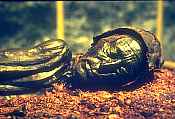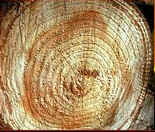 One
such example is the Tollund man found in a Danish bog. He is thought to be the
most well preserved body dating from prehistoric times. He is 2400 yrs old and dates
back to the Iron Age.
One
such example is the Tollund man found in a Danish bog. He is thought to be the
most well preserved body dating from prehistoric times. He is 2400 yrs old and dates
back to the Iron Age.Carbon Dating
Carbon dating is probably the most well known technique for determining the age of an object. Generally only organic materials can be dated using this technique, for instance bones, charcoal and wood. Sometimes plant and animal matter that would normally decay is preserved by unusual conditions such as water-logged, arid or icy areas.
 One
such example is the Tollund man found in a Danish bog. He is thought to be the
most well preserved body dating from prehistoric times. He is 2400 yrs old and dates
back to the Iron Age.
One
such example is the Tollund man found in a Danish bog. He is thought to be the
most well preserved body dating from prehistoric times. He is 2400 yrs old and dates
back to the Iron Age.
Carbon is present in all living matter. It has three isotopes one of which is radioactive - 14C. Carbon-14 is unusual in that it is constantly being formed in the atmosphere by the reaction of nitrogen with cosmic ray neutrons.
The 14C then combines with oxygen to form carbon dioxide, which is eventually incorporated into plant and animal matter. The production occurs at a constant rate and therefore the proportion of 14CO2 in organic matter is constant. When a plant or animal dies they cease to take in any more 14CO2 and that which is present begins to decay. It decays at a rate governed by the radioactive decay law.
This rate law is first order;
(1) kt = ln{[A]0/[A]}
(2) kt½ = ln2
The half life (t½ ) of 14C is 5730 years. Using this information and equation (2), the rate constant (k) can be found. Then, knowing [A]0 (amount of 14C in new matter) and [A] (amount of 14C in matter being dated), the age of the sample (t) can be found.
This model assumes that 14C production is constant across the globe. This is infact not the case, the Earths magnetic field and sunspots can both affect rate of production.

To combat this, Carbon-14 results are changed into a calendar date using a calibration curve of dendochronologically dated tree rings which have also been carbon dated.
Dating can be achieved using only a few milligrammes of material due to the use of an accelerator mass spectrometer (AMS). This separates and counts the number of 14C atoms in the sample.